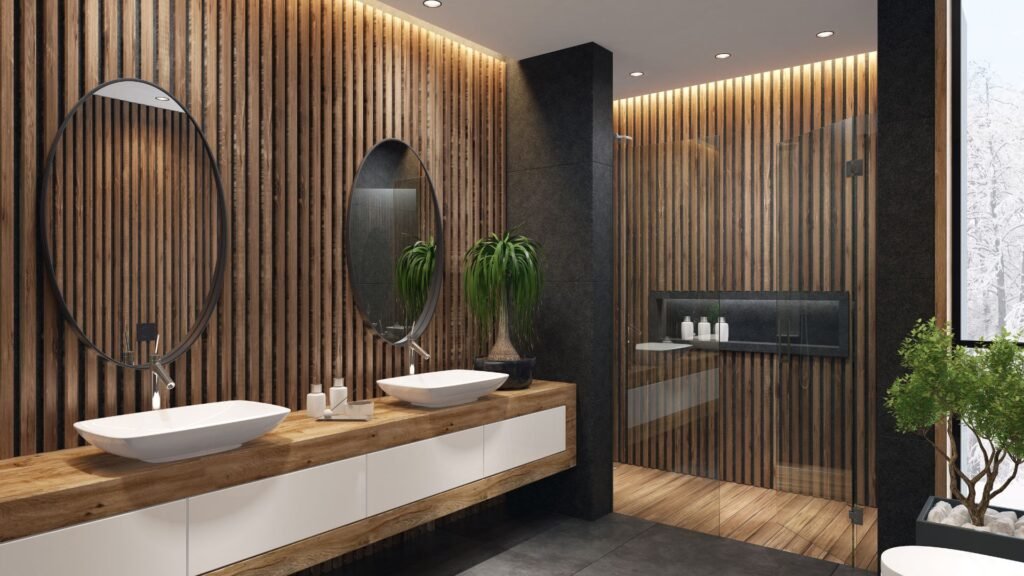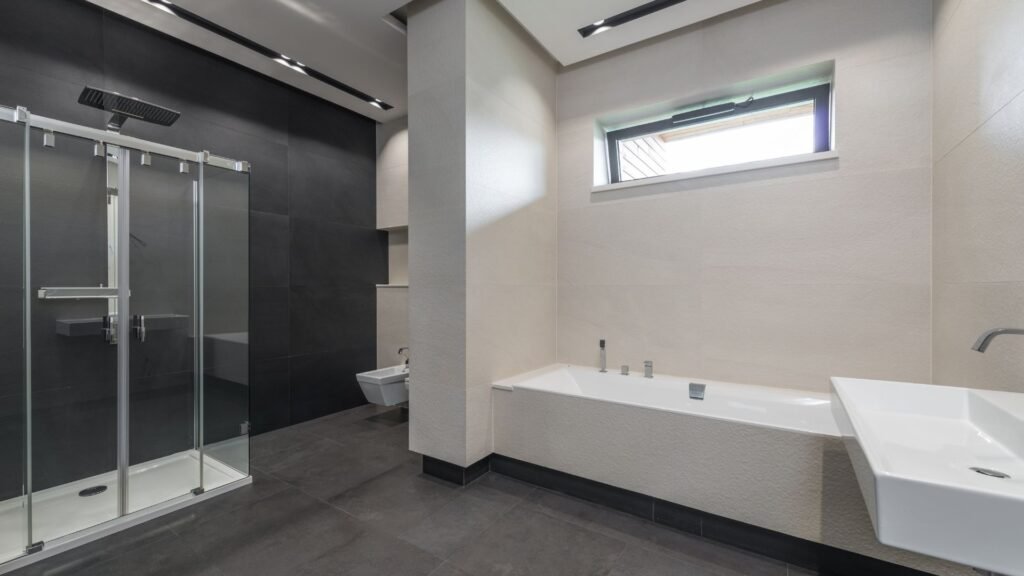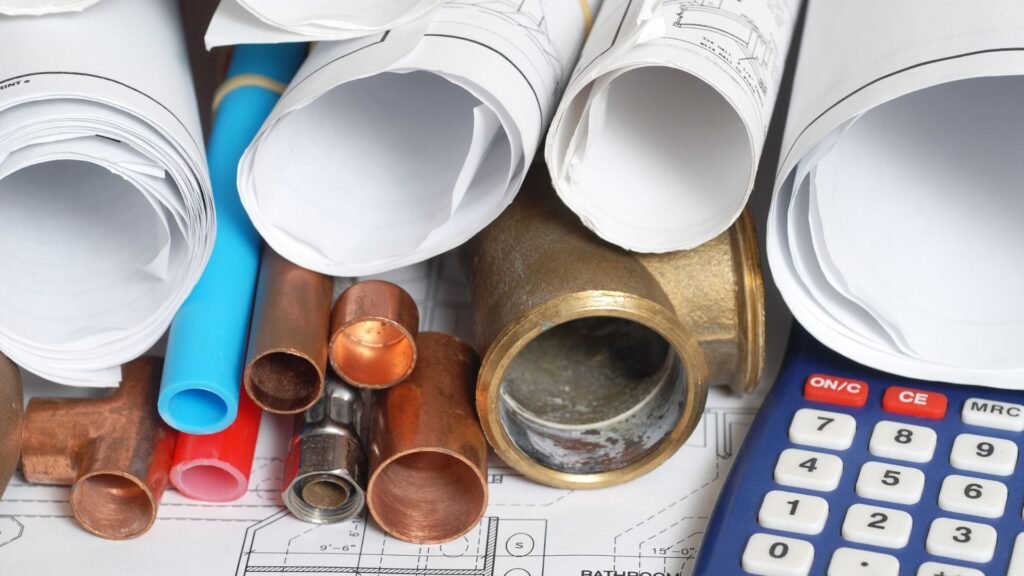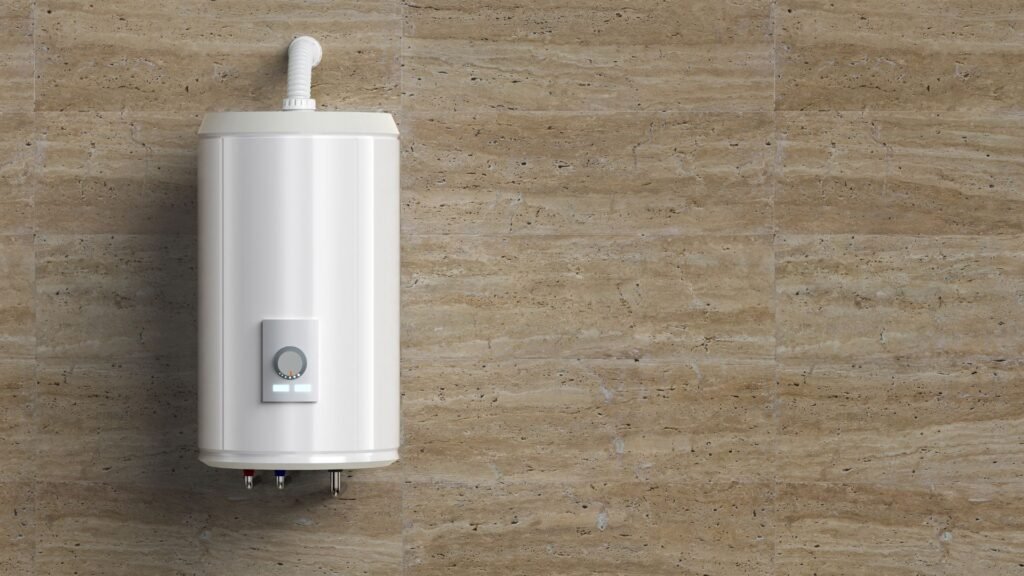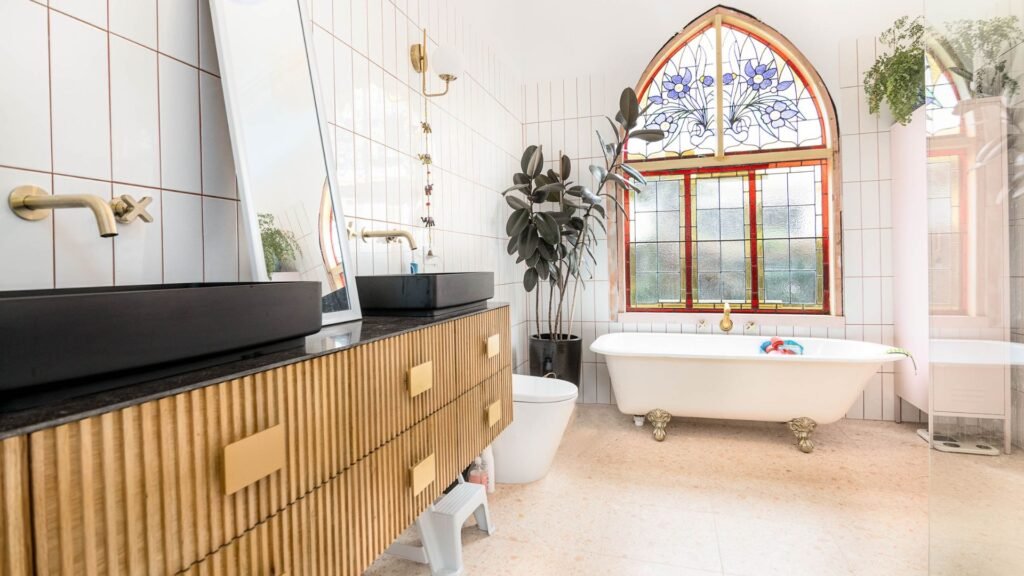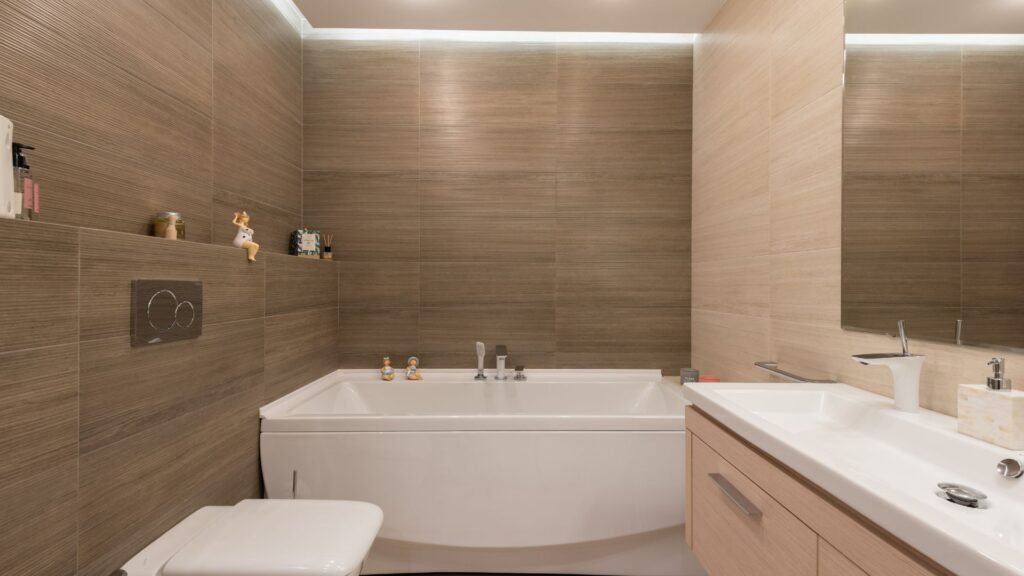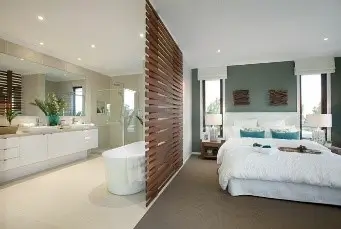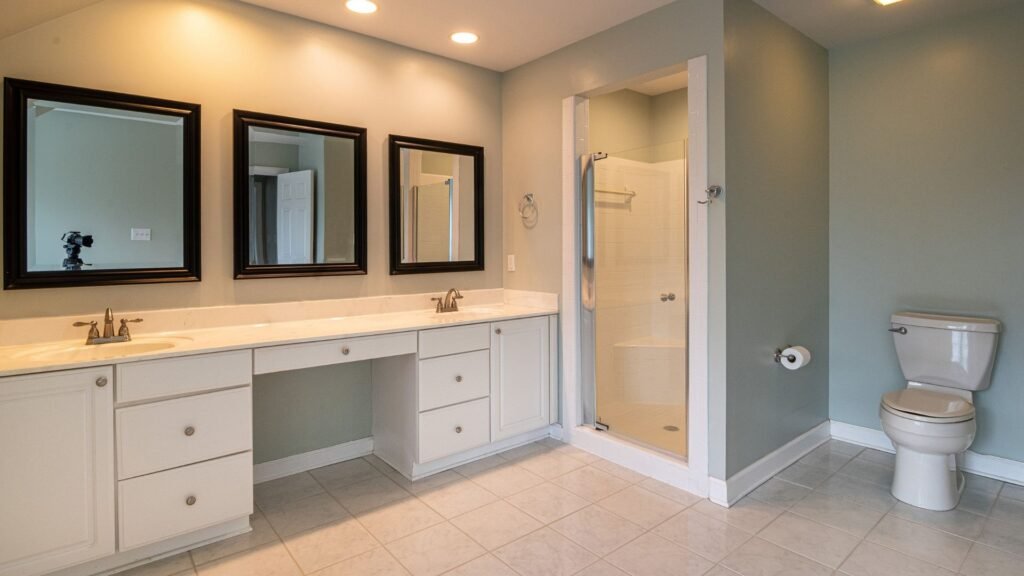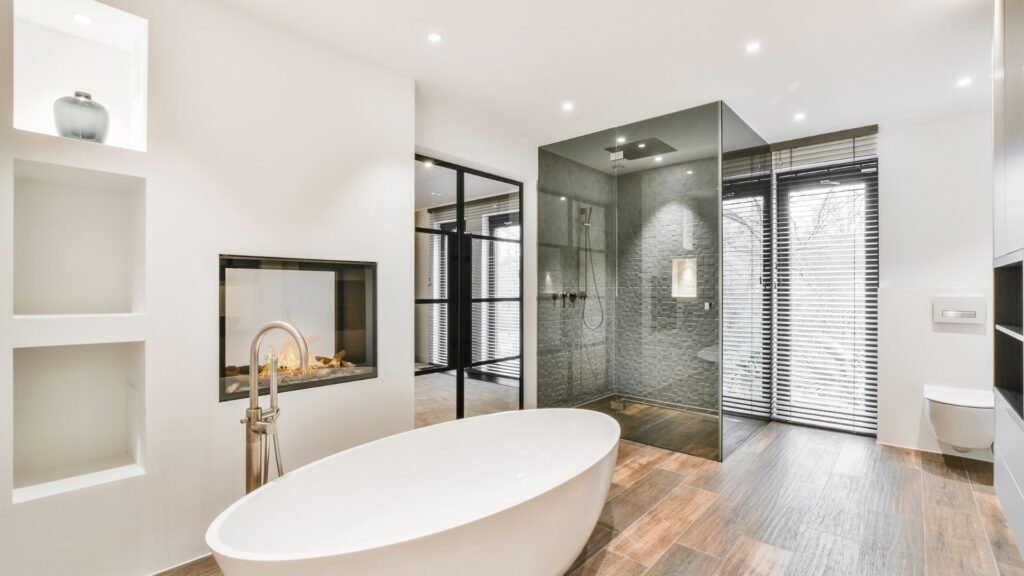Welcome to your go-to guide for finding the best material for bathroom walls in NZ. Choosing the right wall finish isn’t just about looks, it’s about dealing with constant moisture, preventing mould, and making sure your space stays clean and durable over time. With so many options available, from tiles and acrylic panels to waterproof paint and laminate boards, it can get confusing fast. This post breaks it all down clearly, with pros and cons for each material, real-world tips, and what actually works best in New Zealand homes. Whether you’re renovating a family bathroom or upgrading a rental, this guide will help you make a smart, lasting choice.
The best material for bathroom walls in NZ depends on moisture levels, style, and budget. Popular options include tiles for durability, acrylic panels for low maintenance, and wet wall panels for a sleek, waterproof finish. For a cost-effective choice, waterproof paint works in low-splash areas. In high-moisture zones, tiles or wall panels are the most reliable.
Table of Contents
What To Consider Before Choosing A Bathroom Wall Material
When planning a bathroom upgrade or renovation, choosing the right wall material can make a big difference in how your space performs and lasts. It’s not just about picking something that looks good, it’s also about functionality, durability, and long-term value. In New Zealand, where homes experience a range of climates and moisture levels, making the right choice is even more important. Here’s what you should look at before making a final decision.
Moisture Resistance
Bathrooms are wet by nature. Showers, baths, and even daily handwashing release moisture into the air, which can seep into wall surfaces over time. That’s why your chosen material must resist water. If not, you risk mould, peeling paint, and warped surfaces. Materials like tiles, wet wall panels, and acrylic liners are excellent for resisting moisture and preventing long-term damage.
- Ask yourself: Will this material hold up in areas with daily water exposure, like behind a vanity or inside a shower? Always check if the product is designed specifically for wet areas, not just general wall use.
Durability In Humid Conditions
New Zealand homes, especially in coastal or southern areas, often deal with high humidity. This can put added stress on materials that aren’t built for constant moisture. Some materials may swell, discolour, or weaken over time if they’re not made for humid environments.
Durability doesn’t just mean toughness, it means how well a material holds up without warping, cracking, or fading. Cement boards, quality tiles, and solid surface materials offer strong performance. Cheaper materials might work temporarily but can become costly if you need to replace or repair them later.
Easy Cleaning And Maintenance
Bathroom walls get exposed to splashes, soap scum, and sometimes mildew. If the material isn’t easy to clean, you’ll end up spending more time scrubbing or dealing with stains. Smooth, non-porous surfaces like acrylic panels or laminate wall boards are easy to wipe clean with a mild solution.
On the other hand, while tiles look great, the grout between them can collect grime and require regular scrubbing or resealing. Think about how much maintenance you’re willing to do weekly and choose a material that matches your lifestyle.
Aesthetic Preferences
Your bathroom should reflect your personal style, whether that’s modern, minimalist, coastal, or classic. Tiles offer a wide range of colours, shapes, and textures. Wall panels and waterproof paints give you sleek or bold looks depending on the finish.
Some homeowners prefer the warm texture of stone or the glossy appeal of acrylic. Others like a rustic touch using cement or matte tiles. Make sure the material not only protects your walls but also complements the rest of your bathroom’s design.
Budget And Installation
Cost matters. Some materials look great but come with high installation fees or hidden costs like sealing or regular maintenance. For example, tiles often cost more in labour than wall panels. On the other hand, waterproof paint may be cheap up front but might need repainting sooner than expected.
Think about both upfront and long-term costs. Is this a DIY-friendly option? Will you need a licensed professional to install it? A small bathroom makeover doesn’t have to blow your budget, but cutting corners on materials can lead to expensive repairs later.
Availability Of Materials In New Zealand
Not all materials are easy to source locally. Some popular international products may not be readily available in New Zealand or could come with higher shipping costs and longer delivery times. This can delay your project or increase expenses unexpectedly.
Before deciding, check if your preferred material is stocked by local suppliers. Look for brands that are tested for New Zealand conditions. Materials commonly used in Europe or the US may not always perform the same way here due to our unique climate and building standards.
Choosing the right bathroom wall material isn’t just about what’s trendy. It’s about what works best in your home, under your conditions, and within your budget. Always weigh function, cost, and design together, and don’t hesitate to ask local suppliers or builders what they recommend for your area.
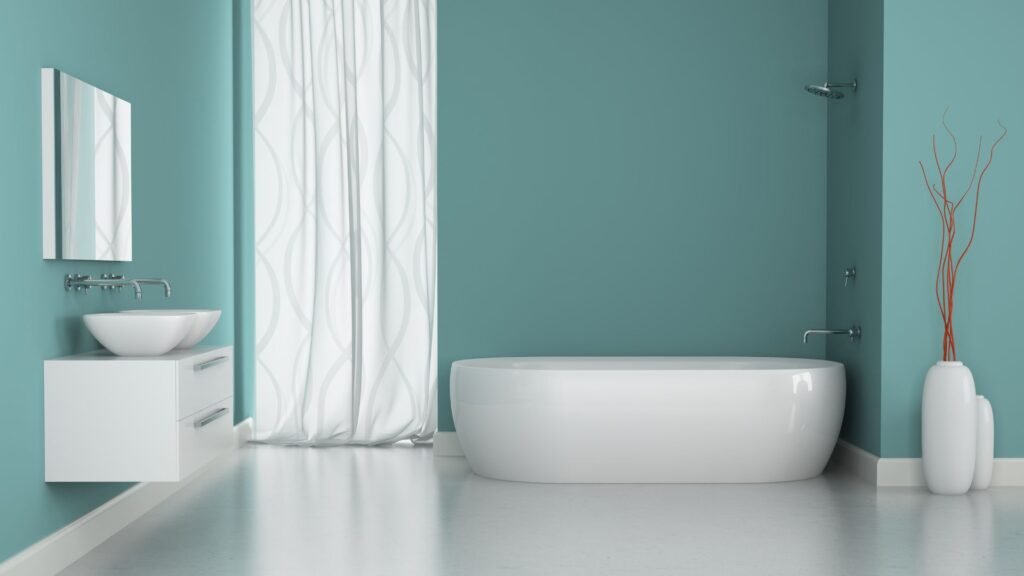
Popular Bathroom Wall Materials In NZ (Pros And Cons)
Choosing the right material for your bathroom walls isn’t just about style, it’s about function, durability, and staying within budget. In New Zealand, moisture levels, ventilation, and climate can all influence what works best. Below, you’ll find the most popular bathroom wall materials used in NZ homes today, complete with their pros, cons, and ideal use cases. This section will help you compare your options and make an informed choice based on your needs and budget.
Tiles
Tiles are a go-to choice for many Kiwi homeowners. Commonly made from ceramic or porcelain, they’re known for their water resistance and clean look. You’ll see them often in showers, splash zones, and as decorative feature walls.
Pros
Tiles are waterproof when sealed correctly, easy to wipe clean, and built to last. They come in endless styles, colours, and sizes, great for personalising your space.
Cons
Grout needs regular cleaning and sealing to prevent mould. Tiles can feel cold underfoot, and the installation can be costly due to labour and prep work.
Best For
High-moisture areas like shower walls and backsplashes, or as a feature wall behind vanities.
Acrylic Wall Panels
Acrylic panels are becoming a top pick for modern bathroom renovations in NZ. They’re sleek, smooth, and relatively easy to install.
What They Are
Pre-formed plastic sheets designed to cover large wall areas. They offer a seamless look with no grout lines.
Pros
They’re low maintenance, non-porous, and simple to clean. Ideal for busy households or rental properties.
Cons
They can scratch easily if not handled with care. Style options are more limited compared to tiles.
Best For
DIY bathroom upgrades or budget-conscious homeowners wanting a clean, modern look without high installation costs.
Fibreglass Or PVC Wall Liners
These are lightweight, flexible panels often used in rental properties or temporary setups. They’re easy to work with and quick to install.
Pros
Affordable, DIY-friendly, and resistant to water. Great for covering older walls that need a refresh.
Cons
They lack the high-end look of tile or stone and may feel flimsy. Style and texture options are basic.
Best For
Fast, low-cost upgrades in utility bathrooms or rentals where appearance is less critical.
Waterproof Paint
Waterproof paint is one of the most budget-friendly options available. But it has limits, especially in areas that get splashed frequently.
Can It Work Alone
Yes, but only in low-moisture areas. It’s not a substitute for tiles or panels near showers or bathtubs.
Pros
Affordable, easy to apply, and available in a wide range of colours. Perfect for adding a personal touch.
Cons
Not ideal for wet zones. Over time, moisture can cause peeling or bubbling without proper prep.
Best For
Powder rooms, walls far from water sources, or as an accent colour above tiled sections.
Wet Wall Panels / Laminate Panels
Wet wall panels are growing in popularity across NZ for their clean look and practicality. These large-format sheets often resemble tile or stone finishes.
Pros
They’re seamless with fewer joins, making them highly water-resistant and easy to maintain. No grout means no mould buildup.
Cons
They can be pricier than traditional materials. Some designs may need to be specially ordered, affecting availability and lead times.
Best For
Contemporary bathrooms or full-scale renovations where a modern, polished finish is the goal.
Cement Board With Tile Overlay
This method offers serious durability. Cement board acts as a backing surface, and tiles are laid on top.
Best For DIYers
Those who want a lasting solution and aren’t afraid of some elbow grease.
Pros
Durable and strong. When waterproofed properly, it can handle years of use without issue.
Cons
Requires proper sealing and some skill. Mistakes during installation can lead to water issues later.
Best For
Long-term upgrades where strength and longevity matter more than ease of install.
Solid Surface Materials (E.g, Corian, Stone Composite)
Solid surface materials are premium picks found in luxury bathrooms. They combine beauty with performance.
Pros
Seamless and water-resistant with a smooth, high-end finish. Ideal for homeowners who want minimal joins and easy cleaning.
Cons
They come at a high cost. Installation must be handled by professionals, adding to the overall price.
Best For
High-end renovations, designer bathrooms, or anyone wanting a sleek, durable, and modern aesthetic.
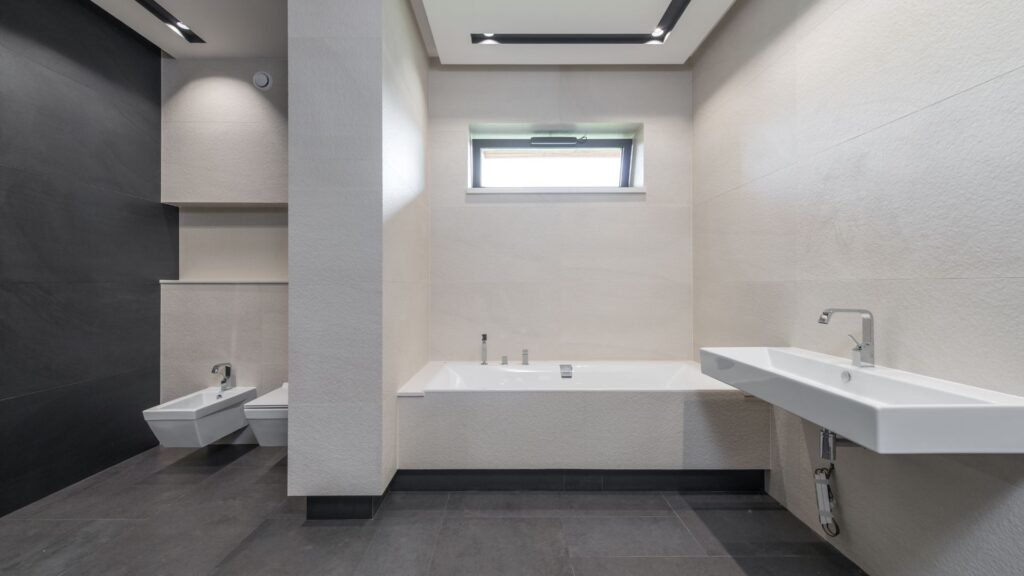
Best Bathroom Wall Material Based On NZ Climate
Choosing the right bathroom wall material in New Zealand isn’t just about style or budget. The country’s damp, temperate climate makes moisture control a top priority. If you pick the wrong material, you could face mould growth, peeling surfaces, or constant repairs. To make a smart choice, you need to understand how New Zealand’s weather affects your bathroom, and what materials are built to handle it.
Why New Zealand’s Damp, Temperate Climate Affects Your Choice
New Zealand experiences a mix of wet and mild conditions year-round. High humidity, frequent rainfall, and cooler temperatures, especially in winter, create a perfect environment for condensation and mould. Bathrooms already deal with constant steam from showers and baths, so the extra moisture in the air makes the problem worse.
When walls aren’t properly sealed or made from moisture-resistant materials, water seeps in. Over time, this leads to bubbling paint, warped panels, or even rot behind the surface. That’s why using the right wall material is more than a design choice, it’s a defense against long-term damage.
North Vs South Island Differences (Humidity, Ventilation, Insulation)
Climate varies across New Zealand, and your choice should depend on where you live.
- North Island: Regions like Auckland and Wellington often have warmer but more humid conditions. Bathrooms here need strong ventilation and materials that can handle regular dampness. Acrylic wall panels or tiles with proper grout sealing work well because they’re easier to wipe down and resist water build-up.
- South Island: Areas like Christchurch and Queenstown tend to be colder, especially in winter. Condensation becomes a bigger issue when cold surfaces meet warm, moist air. In these homes, insulation is just as important as waterproof materials. Wall panels with thermal resistance or tiled walls backed by cement board are more effective in preventing mould.
Proper ventilation, like extractor fans or window vents, plays a key role in both islands. But in high-condensation zones, even good airflow isn’t enough if your wall materials absorb moisture.
What Materials Resist Mould And Condensation Best
Here are the top materials recommended for NZ’s moisture-heavy environment:
- Ceramic Or Porcelain Tiles: These are non-porous, durable, and resistant to mould. When sealed correctly, they prevent water from getting behind the walls. Just make sure the grout is maintained to avoid leaks.
- Acrylic Or PVC Wall Panels: These are seamless, making them ideal for preventing mould in joints or corners. They’re easy to clean and work well in humid rooms with limited airflow.
- Wet Wall Panels: Also known as laminate wall boards, these are designed for wet zones. They’re mould-resistant, quick to install, and hold up well in both warm and cold areas.
- Cement Board Backing With Tile Finish: Ideal for long-term durability, especially in colder regions. Cement boards don’t rot or absorb water and add strength to the tiled finish on top.
Avoid materials like standard drywall, timber cladding, or unsealed paint in wet bathrooms. These absorb moisture, trap dampness, and can quickly turn into breeding grounds for mould.
When planning your bathroom upgrade, match your material not just to your taste, but to your local climate. In New Zealand, a smart wall choice is one that stays dry, resists mildew, and saves you from redoing the job later.
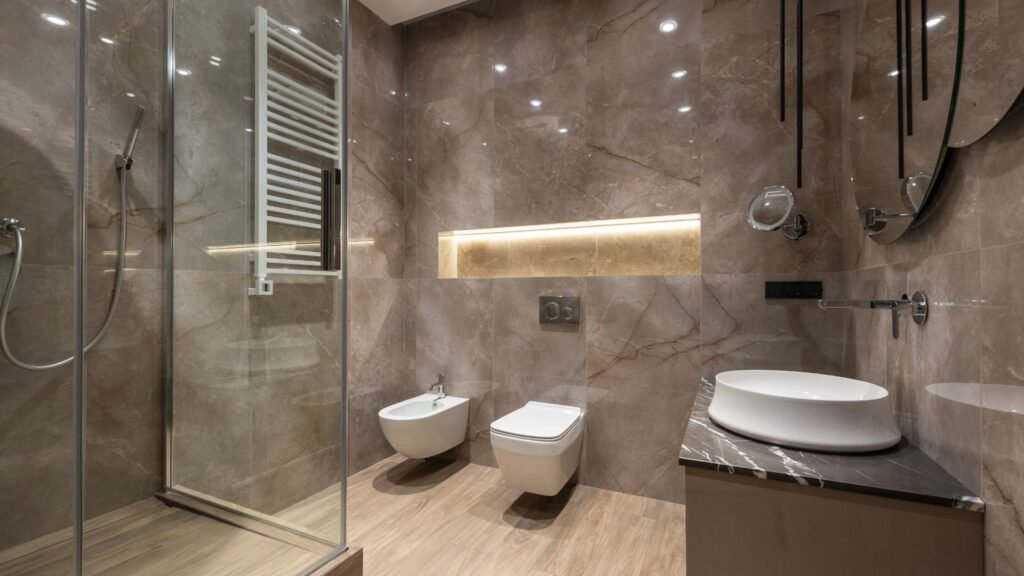
Style Vs Function: Finding The Right Balance
Designing a bathroom isn’t just about choosing what looks good. It’s about creating a space that works well every day. That’s where balancing style and function comes in. You want a bathroom that feels like you, but you also need it to handle moisture, splashes, and constant use. In New Zealand, where the climate can swing from humid to chilly depending on the region, your bathroom materials need to work hard, without looking boring. Below, we’ll walk through how you can find that sweet spot between beautiful design and practical choices.
Tips On Mixing Materials (E.G., Tile + Painted Wall)
You don’t need to cover every wall in tile to have a waterproof bathroom. A smart mix of materials can save money, add style, and still keep the space easy to maintain.
- Use tiles in high-moisture areas like behind the shower or around the bathtub. They protect the wall and are easy to clean.
- Choose waterproof or semi-gloss paint for the drier areas, like above vanities or in powder rooms. This gives you more freedom with colour and texture.
- Try acrylic panels for one feature wall and balance it with paint or low-cost liners on the others.
Mixing materials not only adds visual contrast but also helps you stay within budget. Just be sure every surface near water is moisture-resistant.
Matching Wall Materials To Your Overall Design
Every bathroom has a style, even if you haven’t defined it yet. Your wall materials should support that style, not fight against it.
Ask yourself:
- Is the room modern, or do you want a classic look?
- Do you like sharp lines or natural, softer finishes?
- What colours are already in your flooring or vanity?
For example:
- If your vanity is timber, go for tiles or panels in neutral tones to keep the natural warmth.
- If your fixtures are matte black or brushed gold, consider bolder wall colours or patterned tiles to complement them.
- Don’t forget the lighting. Glossy tiles bounce light around, while matte finishes absorb it, which changes the whole feel.
The goal is harmony. Your wall materials should tie everything together, not stand out awkwardly.
Examples Of Modern, Minimalist, Rustic, And Coastal Bathroom Styles
Here are a few design styles common in New Zealand homes, and how to match your bathroom walls to each.
Modern
Think clean lines, neutral colours, and sleek finishes. Use large-format tiles or acrylic panels in white, grey, or black. Keep grout lines minimal and surfaces seamless. Go for a matte finish to add depth without making it look too glossy.
Minimalist
Less is more. Stick to one or two materials. Painted walls in light shades work well with a tiled splash zone. Avoid textures or busy patterns. Choose functionality over decoration.
Rustic
Natural textures shine here. Use stone-look tiles, reclaimed wood accents, or paint in earthy tones. Panels with a concrete or aged finish work well. Combine warm lighting with a matte surface to enhance the cozy vibe.
Coastal
Think fresh and airy. Use light blue or white paint with sandy-toned tiles. Shiplap wall panels or beadboard can bring that beach-house feel. Go for finishes that reflect natural light and resist salt air if you’re near the coast.
Finding the right balance isn’t about following a design rulebook. It’s about choosing materials that make your bathroom feel like home, and work like a well-oiled machine. The right combo will look great, hold up to daily life, and never make you regret skipping all-tile walls.

What Are Kiwis Actually Using? (NZ Trends And Preferences)
New Zealand homeowners are becoming more selective and informed when it comes to choosing bathroom wall materials. With changing design tastes, tighter building codes, and growing awareness of moisture issues, the materials used in local bathrooms are shifting. Let’s break down what Kiwis are actually using and preferring today.
Local Bathroom Renovation Trends
Renovating bathrooms is one of the top home improvement projects across New Zealand. Many homeowners are not just fixing old leaks or repainting walls, they’re transforming bathrooms into functional, stylish spaces. Here’s what’s trending:
- Minimalist Designs: Clean lines, neutral colours, and sleek surfaces are in. Many homeowners are ditching overly decorative tiles in favour of smooth panels or large-format tiles.
- Low-Maintenance Finishes: More Kiwis are choosing wall materials that reduce cleaning time. That’s why acrylic and laminate panels are gaining popularity, they have no grout, resist mould, and wipe clean easily.
- Eco-Friendly Choices: There’s growing interest in sustainable materials. Some people are opting for recycled panels or low-VOC waterproof paints, especially in environmentally conscious households.
- Full Wet Rooms: More people are converting standard bathrooms into full wet rooms, which require wall materials that are completely waterproof from floor to ceiling. This is pushing demand for acrylic, laminate, or tile wall systems.
Most Commonly Used Materials In Recent Builds
Based on feedback from builders and renovation experts across NZ, here are the materials being used most often in both new builds and bathroom upgrades.
- Ceramic And Porcelain Tiles: Still the most popular due to their durability and classic appearance. Used widely in high-moisture areas like showers and around bathtubs.
- Acrylic Shower Liners: These are commonly found in new homes for their affordability and speed of installation. They’re especially popular in spec homes and townhouses.
- Laminate Wall Panels: Also known as wet wall panels, these are growing fast in popularity thanks to their seamless look and minimal maintenance. Many modern homes are now including these as a standard feature.
- Waterproof Paint: Often used in less exposed areas or smaller bathrooms like guest toilets or powder rooms. It’s rarely used alone in shower zones.
Builders in NZ are prioritizing materials that meet the country’s strict moisture control standards. This is especially important in regions with high humidity like Auckland, Northland, and the West Coast.
Popular Choices For Baches Vs Family Homes
What works in a family home may not be ideal for a beachside bach. Different needs and budgets influence the material choices in these two settings.
For Baches
- PVC Or Acrylic Panels: These are easy to install and perfect for occasional use. Since baches often aren’t occupied year-round, low-maintenance and moisture-resistant materials are preferred.
- Waterproof Paint Or Basic Tiles: Many owners keep it simple, using basic tiles or just waterproof paint in dry areas to save costs.
- Lightweight Materials: Baches are often older homes or in remote locations, so easy-to-handle materials that don’t need specialists are common.
For Family Homes
- Tiles And Wet Wall Panels: These are preferred for their long lifespan and ability to handle daily wear and tear. Parents appreciate materials that are easy to clean and tough enough to resist impact.
- High-End Finishes: Homeowners investing in a long-term property may go for solid surface panels or designer tiles for visual appeal and resale value.
- Custom Solutions: Families with larger bathrooms often combine materials, using tiles in showers and waterproof paint or laminate panels elsewhere.
Across the board, the goal is practical design without sacrificing comfort or style. Whether it’s a family bathroom or a beach retreat, New Zealanders are increasingly choosing materials that fit their lifestyle, not just their budget.
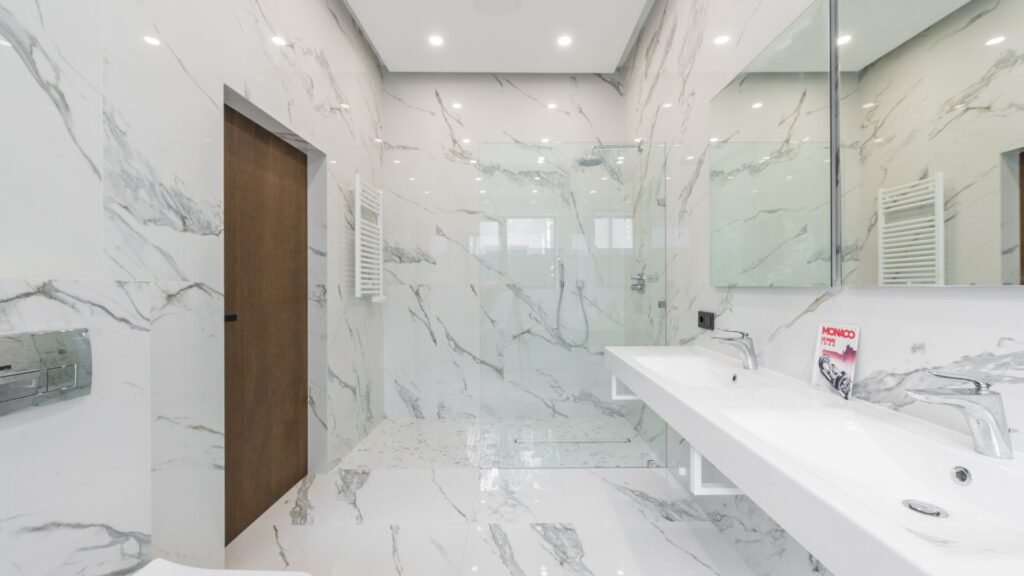
Budget Breakdown: What You Can Expect To Spend In NZ
When planning a bathroom renovation, one of the biggest decisions you’ll face is how much to spend on wall materials. Prices can vary depending on the material, labour, and preparation work required. If you’re in New Zealand, it’s important to understand the typical costs you’ll see on quotes, so you can avoid surprises later.
Let’s break down the average costs by material, look at the common hidden expenses, and explore combinations that save money without cutting corners.
Average Costs By Material Type (Supply And Install)
Here’s a general idea of what you can expect to pay for popular bathroom wall materials in NZ. These estimates include both supply and professional installation.
- Tiles: $90 to $150+ per square metre
Tiles are one of the most popular options but also one of the pricier ones. Higher-end finishes, like natural stone or designer patterns, will cost even more. Labour is intensive, especially with grouting and waterproofing.
- Acrylic Panels: $120 to $180 per square metre
These panels are gaining traction due to their clean look and fast installation. They cost more upfront than paint or liners, but the ease of maintenance often justifies the price.
- Wet Wall Panels (Laminate): $150 to $250 per square metre
A premium option with a sleek appearance and very low maintenance. They’re becoming more common in modern NZ homes but may have limited availability depending on your region.
- Waterproof Paint: $20 to $40 per litre (plus labour)
Paint is the most affordable material. For a standard bathroom, you might need 2–3 litres. Labour costs are lower compared to tiling or panels. Still, it’s only suitable for low-moisture areas.
- PVC Or Fibreglass Wall Liners: $60 to $100 per square metre
These are cheaper alternatives for quick makeovers or rentals. They’re functional but not known for aesthetics. Installation is fast and less labour-intensive.
- Cement Board With Tile Overlay: $130 to $180 per square metre
Often used for showers or full-height wet zones, this method is durable and long-lasting. The cement board itself isn’t expensive, but the layering, sealing, and tiling drive up the cost.
- Solid Surface Materials (e.g. Corian): $300+ per square metre
A premium choice usually found in luxury bathrooms. These materials are seamless, waterproof, and visually stunning, but they come with a high price tag.
Hidden Costs (Waterproofing, Sealing, Labour)
Material costs are only part of the picture. You’ll also need to factor in these hidden expenses.
- Waterproofing Membranes: Essential for any area exposed to splashes or steam. Expect to pay around $20 to $30 per square metre. Skipping this step can lead to long-term water damage.
- Sealing And Grouting: For tiled walls, sealing grout lines and joints is critical. This service can add $10 to $20 per square metre and needs periodic upkeep.
- Labour Rates: Skilled tradespeople in NZ usually charge $45 to $85 per hour. Rates may be higher in cities like Auckland or Wellington. Complexity and layout can also affect final labour costs.
- Waste Disposal And Prep Work: Removing old materials, disposing of waste, and prepping the wall surface can add $300 to $800 depending on the size of the bathroom and existing conditions.
Cost-Effective Combinations That Don’t Compromise On Quality
If you’re working with a limited budget but still want your bathroom to look great and function well, consider mixing materials strategically.
- Tile Just The Shower Area: Use tiles where moisture is highest, like inside the shower, and opt for waterproof paint or PVC panels on other walls.
- Go Mid-Range With Acrylic Panels: They give a modern, clean look without the high cost of stone or full tiling. Good for family homes or rentals.
- Use Waterproof Paint For Accent Walls: Add colour or style on walls less exposed to water. Pair with tiled splash zones or panels to maintain durability.
- DIY Where You Can: Painting, sealing, and even some panel installs can be done yourself if you’re confident. Leave the complex jobs, like tiling and waterproofing, to the pros.
- Shop Around Locally: NZ has many suppliers, and prices vary. Ask for multiple quotes and look for end-of-line discounts or clearance stock.
By understanding the true cost of each material and planning your design smartly, you can build a bathroom that looks great, holds up in NZ’s damp climate, and fits your budget. You don’t need to spend a fortune to get quality, you just need to spend wisely.
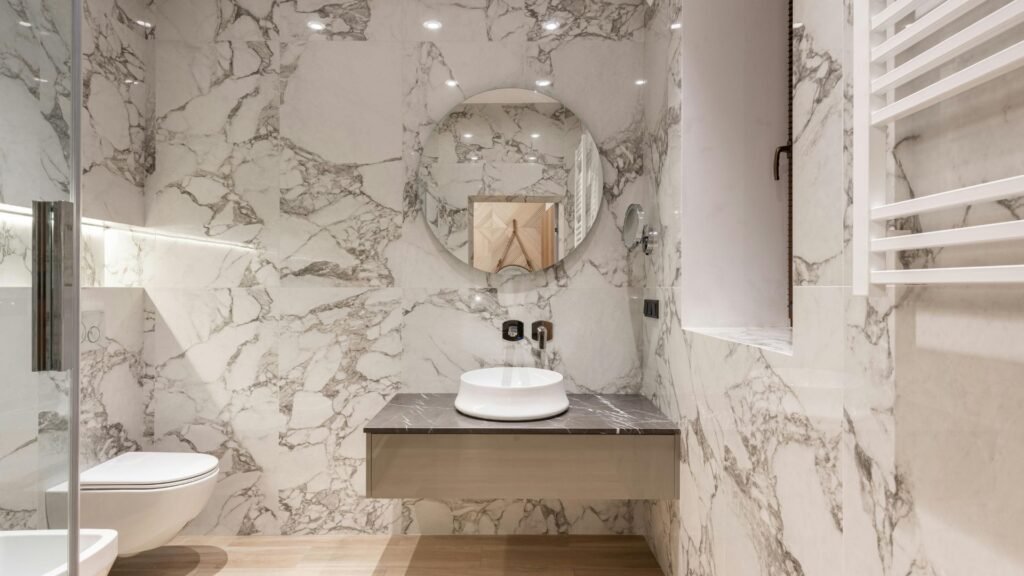
Maintenance Tips For Bathroom Walls
Keeping your bathroom walls in good shape isn’t just about looks, it’s about making sure your walls stay strong, clean, and mold-free for years to come. No matter what material you choose, regular maintenance plays a big role in how long it lasts and how well it performs in New Zealand’s often humid conditions. Here’s how to take care of your bathroom walls properly, spot issues early, and avoid using the wrong products that could do more harm than good.
Cleaning Routines For Each Material
Tiles
Use a mild bathroom cleaner or a vinegar-water solution to clean your tiles weekly. Scrub grout lines with a soft brush to prevent mold buildup. Avoid bleach for regular cleaning, as it can break down grout over time. Re-seal grout once a year to keep moisture out.
Acrylic Panels
Wipe with a soft cloth and warm, soapy water. Avoid abrasive scrubbers and strong chemicals, as these can scratch the surface. For tough spots like soap scum, use a non-acidic bathroom cleaner that’s safe for acrylic.
Wet Wall Panels
These need very little maintenance. Just use a microfiber cloth and a non-abrasive cleaner once or twice a week. Make sure to wipe away water droplets to avoid water spots over time.
Painted Walls
If you’ve used waterproof or bathroom-grade paint, wipe the surface with a damp cloth and mild detergent. Never use bleach or harsh cleaners. If you notice peeling or bubbling, it might be time for a repaint or a deeper inspection for moisture issues behind the wall.
PVC or Fibreglass Liners
Clean with gentle, non-abrasive cleaners. These materials resist stains but can scratch easily. Stay away from scrubbing pads or rough cloths.
Cement Board With Tile Overlay
Treat this the same way as regular tile. Clean weekly, seal grout annually, and watch for signs of water seeping through joints.
How To Spot Water Damage Early
Water damage often starts small but can quickly lead to bigger problems if left untreated. Keep an eye out for these early signs.
- Peeling Paint Or Bubbling Wallpaper: This often means water is trapped behind the surface.
- Musty Smells: Mold or mildew behind the wall will usually cause a damp, musty odour.
- Discolouration Or Stains: Yellow or brown patches on walls can indicate water leakage.
- Loose Tiles Or Panels: If the material is pulling away from the wall, it could be a moisture problem.
- Soft Or Warped Surfaces: Press gently on painted or panelled surfaces. If they feel soft, you may have rot underneath.
Catching these signs early can save you a lot of money and prevent structural damage.
What Products To Avoid
Using the wrong products can damage your bathroom walls or shorten their lifespan. Here’s what to steer clear of:
- Abrasive Scrubbers Or Steel Wool: These can scratch acrylic, PVC, and even tiles.
- Ammonia-Based Cleaners: These may damage some wall panel finishes and contribute to discoloration.
- Bleach On Grout Frequently: Occasional use is fine for deep cleaning, but overuse breaks down grout over time.
- Oil-Based Cleaners: These can leave residue on tiles and make surfaces slippery or attract more dirt.
- High-Pressure Steam Cleaners: Unless the material is rated for it, steam can seep into joins or behind panels and cause damage.
Stick to gentle, bathroom-approved cleaners that match your material type. When in doubt, test any new cleaner on a small, hidden area first.
With the right care, your bathroom walls can stay fresh, clean, and durable, whether you’ve got tiles, panels, paint, or liners. Regular maintenance not only keeps things looking sharp but also protects your home from costly water damage in the long run.
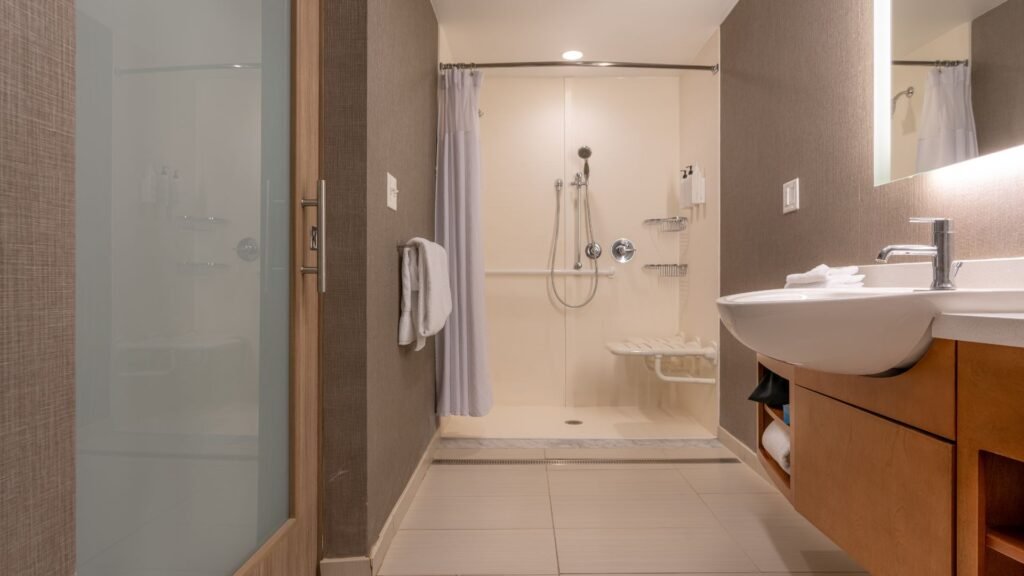
Expert Advice: What Builders And Renovators Recommend In NZ
Choosing the right material for your bathroom walls in New Zealand isn’t always as straightforward as it seems. While you might have your eyes set on a certain look, what works in one home may not suit another. That’s why we looked into what local builders and bathroom renovators actually recommend based on their on-the-ground experience.
Quick Quotes Or Tips From Local Experts
We asked a few seasoned tradespeople and renovation experts across Auckland, Wellington, and Christchurch to share their go-to advice when it comes to bathroom walls. Here’s what came up the most.
“If you’re doing a full reno, wet wall panels are the easiest to keep clean. You won’t be scrubbing grout lines every month.” – Licensed builder, Wellington
“Acrylic panels work great in rentals or low-traffic bathrooms. Easy to install, cost-effective, and no special maintenance needed.” – Bathroom installer, Auckland
“Stick with tiles for a premium finish, but only if you’re committed to cleaning and sealing the grout lines properly.” – Home renovation contractor, Christchurch
Most pros agree that durability, moisture resistance, and ease of cleaning should be top priorities, especially in NZ’s damp climate. If you’re in an older home or near the coast, you’ll want materials that don’t just look good on day one but hold up for years.
Common Mistakes To Avoid
Even experienced homeowners can fall into some common traps when updating bathroom walls. Here are mistakes local experts see again and again.
- Skipping proper waterproofing: Just slapping on tiles or panels without sealing the surface underneath can lead to leaks and expensive damage.
- Choosing the wrong material for the wrong zone: Waterproof paint may work near the vanity but won’t survive daily shower spray.
- Prioritising looks over function: A trendy finish may look stunning in a showroom but could be hard to clean or prone to mould in real life.
- Hiring the cheapest contractor: A low quote can mean rushed work, sub-par materials, or poor waterproofing.
Avoiding these issues comes down to asking the right questions, doing your research, and not cutting corners where it counts.
Questions To Ask Before Choosing A Supplier Or Contractor
Whether you’re hiring a full-service renovation team or just getting someone to install wall panels, you need to know what you’re getting into. Experts suggest asking these important questions before signing off.
- Do you provide moisture-proof backing or sealing behind the wall material?
- Have you installed this material in NZ homes before? Any references?
- What maintenance will the material require?
- What kind of warranty do you offer on both materials and labour?
- Are you familiar with NZ Building Code requirements for wet areas?
Getting clear, specific answers to these questions helps you avoid surprises, ensures the job is done right, and gives you peace of mind that your bathroom will last.
Local builders and renovators aren’t just installing walls, they’ve seen what fails, what holds up, and what actually works in New Zealand homes. Taking their advice seriously can save you money, time, and stress later down the line.
Get local advice backed by real experience. Click here to discover how our team can guide you through every step of your renovation.
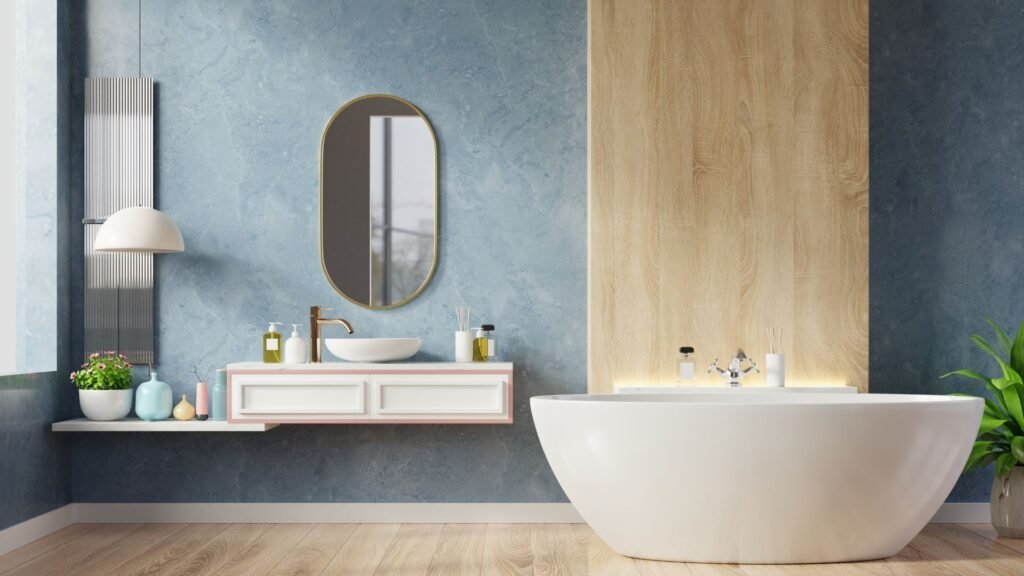
FAQs: About Best Bathroom Wall Materials In NZ
What is the most waterproof material for bathroom walls?
Tiles and wet wall panels are among the most waterproof materials. Tiles offer excellent moisture resistance when sealed properly, while wet wall panels are seamless, reducing the risk of leaks and mould growth.
Can I use regular paint on bathroom walls?
Regular paint isn’t ideal for bathrooms. Always choose waterproof or moisture-resistant paint. Standard paint can peel or allow mould to form in high-moisture areas like near showers or bathtubs.
Are acrylic panels better than tiles for bathroom walls?
Acrylic panels are easier to install, require less maintenance, and have no grout lines. Tiles offer a more traditional, high-end finish but require more upkeep. The better option depends on your budget, style, and long-term maintenance preference.
What’s the cheapest bathroom wall material available in NZ?
Waterproof paint and PVC wall liners are typically the cheapest options. They’re great for low-moisture areas or temporary upgrades but may not last as long or look as polished as tiles or panels.
Can I mix different materials on bathroom walls?
Yes, mixing materials can create contrast and help manage costs. For example, use tiles in wet zones like the shower and paint or panels on drier sections. Just ensure all materials are moisture-resistant where needed.
Is wallpaper a good choice for NZ bathrooms?
Standard wallpaper is not suitable. However, vinyl or waterproof wallpaper can work in low-moisture zones with proper ventilation. It’s more decorative than functional and not recommended for areas prone to splashing.
How do wet wall panels perform in humid NZ climates?
Wet wall panels perform very well in humid environments, including NZ’s coastal and temperate zones. They resist mould, are easy to clean, and hold up to frequent temperature changes when installed correctly.
Can I install bathroom wall materials myself?
DIY is possible for materials like acrylic panels, PVC liners, or waterproof paint. Tiling or installing wet wall panels may require professional help for waterproofing and sealing to prevent future issues.
How often should I maintain or reseal bathroom wall materials?
Tile grout should be cleaned monthly and resealed every 1-2 years. Painted walls may need repainting every 3-5 years. Wall panels require minimal maintenance beyond regular cleaning.
What material do professionals recommend for NZ bathrooms?
Many NZ builders recommend tiles for long-term durability and wet wall panels for modern, low-maintenance bathrooms. The choice often depends on moisture levels, budget, and design preferences.
Conclusion
Choosing the best material for your bathroom walls in NZ comes down to a mix of practicality and personal taste. If you’re on a tight budget, waterproof paint or PVC wall liners can offer a quick fix, especially in low-splash areas, but they may not stand the test of time. For a balance of cost, durability, and style, acrylic wall panels are a solid all-rounder, they’re easy to clean, moisture-resistant, and modern-looking, making them a popular choice for everyday Kiwi homes. Tiles remain a favourite for their classic appeal and long-term performance, especially in high-moisture areas like showers, but they do come with a higher price tag and maintenance needs. Wet wall panels offer a sleek, seamless look that suits modern designs and humid climates but may be out of reach for those with limited budgets. If you live in a colder, damp region of New Zealand, it pays to invest in materials that resist mould and are easy to maintain. At the end of the day, go cheap when the space is used occasionally, like a guest toilet, but invest more when you’re upgrading a main bathroom that sees daily use. Matching the right material to your lifestyle, home environment, and budget is the smartest way to get a result that lasts and looks great.

